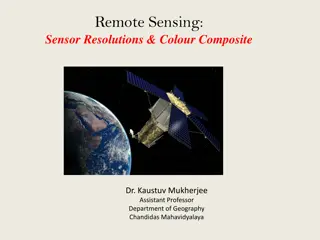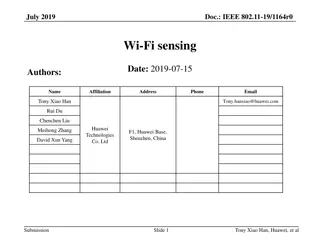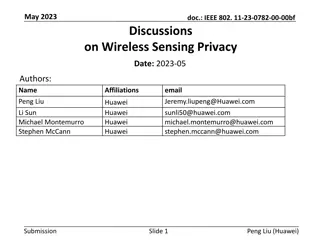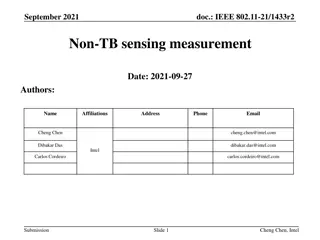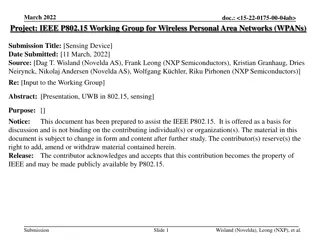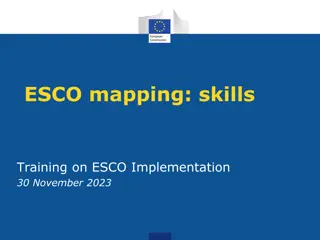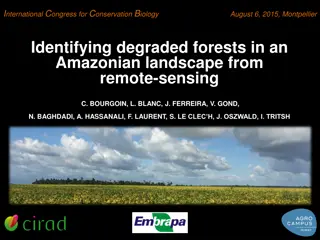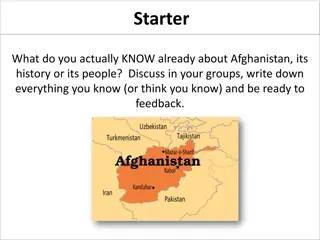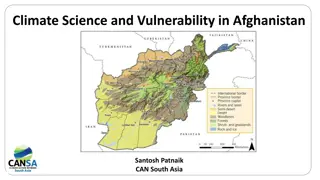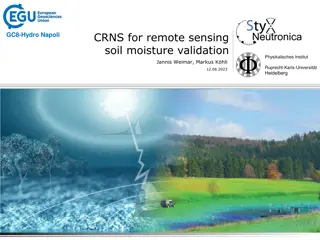Remote Sensing for Population Mapping in Afghanistan
This innovative methodology uses remote sensing technology to estimate population counts in Afghanistan where conducting a full census is challenging. By utilizing statistical modeling with survey, GIS, and satellite imagery data, this approach enables the generation of population counts and density data, contributing to strengthening national statistical capacity and supporting the Sustainable Development Goals (SDGs) and the 2030 Agenda. The process involves enumerating the population through ground-based surveys, predicting population in unsurveyed areas using statistical models, and spatially disaggregating population estimates to provide detailed datasets at various levels. This initiative represents a collaborative effort between the UNFPA, WorldPop/Flowminder, and the Afghanistan National Statistics Office.
Download Presentation

Please find below an Image/Link to download the presentation.
The content on the website is provided AS IS for your information and personal use only. It may not be sold, licensed, or shared on other websites without obtaining consent from the author.If you encounter any issues during the download, it is possible that the publisher has removed the file from their server.
You are allowed to download the files provided on this website for personal or commercial use, subject to the condition that they are used lawfully. All files are the property of their respective owners.
The content on the website is provided AS IS for your information and personal use only. It may not be sold, licensed, or shared on other websites without obtaining consent from the author.
E N D
Presentation Transcript
Your Knowledge Base Starts Here The state-by-state legalization of sports betting began with the May 2018 ruling from the US Supreme Court that The Professional and Amateur Sports Protection Act (PASPA) of 1992 was unconstitutional, except in Nevada. US states were then allowed to decide if they wanted legal sports betting and establish the rules and regulations, licensing and taxes. Delaware was quick to react, becoming the first state with legal sports betting in its three casinos within just 3 weeks. Much like the cannabis-legalization issue, sports betting has existed illegally for decades, and everyone knew it. The American Gaming Association s (AGA) estimate of $150 billion in illegal sports betting has fueled the voices of the legalization proponents.
Billions Are on the Table During approximately the first year since PASPA was overturned, Legal Sports Betting estimated more than $8 billion was wagered on a game or event, generating more than $500 million in revenues for the sportsbooks and more than $60 million in taxes. Gambling Compliance forecasts US legal sports betting could generated as much as $7.9 billion in total annual revenue by 2024, when it also estimates sports betting could be legal in as many as 40 states. Clearly, there is much at stake not only for consumers in entertainment and winnings and states in taxes, but also Native American tribes with casinos, the various major sports leagues, media for ad revenues and many brands and retailers.
States Stake Their Claim After Delaware became the first state to allow sports betting after the Supreme Court ruling, 13 other states offered live, legal single-game sports betting through the end of January 2020. Another 6 states have authorized betting, but are not yet operational. The 14 states, including Nevada, are Delaware, Rhode Island, New Jersey, New Hampshire, New York, Pennsylvania, West Virginia, Indiana, Mississippi, Arkansas, New Mexico and Oregon. The 16 states with 2020 pending legislation or a ballot are Maryland, Connecticut, Maine, Vermont, Massachusetts, Virginia, Florida, Ohio, Kentucky, Missouri, Kansas, Nebraska, South Dakota, California, Washington and Hawai i.
Know the Bettors According to the latest survey data (November/December 2018) from the American Gaming Association, 61% of adults 21+, or 143.1 million, have no interest in sports betting, although, of course, that could change with market maturity. The largest audience group is Core, or those who placed a traditional sports bet at a casino, online or with a bookie during the past year, and represents 14% of adults 21+. Core betters are men (69%), young 23 34 (45%) and have incomes $50K+ (69%). All audience segments from the survey support the legalization of sports betting in their states: all, 78%; Core, 97%; Casual, 97%; Potential, 96%; and Uninterested, 66%.
The Major Sports Leagues Perspective The major sports leagues (NFL, MLB, NBA and NHL) have asked the US Congress to pass federal legislation instead of each state with slightly different regulations. College sports leaders have been more hesitant, thinking betting will taint their amateur status. Within a year of the Supreme Court s ruling, the commissioners of the NBA, NHL and MLB had created partnerships with one of the largest sportsbook operators. Another key issue that involves 3 of the major pro sports (MLB, NBA and the PGA Tour) is states requiring state- licensed sportsbooks to use official league data to assess in-game bets, which some say would benefit the leagues and not bettors or states.
Sports Betting Advertising Opportunities on the Horizon Similar to states, sportsbooks and sports leagues, sports media was quick to launch programming focused exclusively on betting. Fox Sports Lock It In and CBS Sports HQ streaming channel s SportsLine Edge were on the air approximately September 1, 2018. Multiple ad media experts and analysts are advising local media, especially broadcast, to be cautious about accepting sports betting ad buys. Because each state has slightly different regulations, it s important to know any that relate to advertising. It s still difficult to project accurately the potential advertising revenue from legal sports betting, since it will depend on the number of states where it is legal; however, one media analysts estimated during July 2018 future TV advertising could reach $2 billion.
Advertising Strategies As sports betting is a new, but only potential advertising opportunity in many states, no doubt, someone at your station (legal counsel) is researching state laws. It would be helpful for your sales manager to schedule a sales meeting just about sports betting. Although broadcast advertising for sports betting may be legal in your state (or even if isn t yet), it may be advantageous to start to make contacts with potential advertisers, demonstrate your knowledge and your station s proactive approach to the opportunity. Based on the table on page 4 of the Profiler, the largest percentages of current core sports bettors, or men 21 34, are fans of major league sports, which means they will follow the games closely on TV, which is where betting venues and books should advertise.
New Media Strategies Your station must also determine if it will pair sports reporting with sports betting. The station s Website may be the better platform to provide details than on air, even including winning bets. It s also an opportunity to sell Website advertising to the betting venues. As more betting venues and books become mainstream, they have a responsibility to address betting addiction. Social media is an excellent platform to share information and even ask a local psychologist in this specialty to provide some content, especially videos. Clearly, there a myriad of opportunities for betting venues and books to use social media promotionally: Ask customers to share photos/videos of group visits, conduct polls to help identify local audiences, conduct contests and invite comments on games and winnings.


